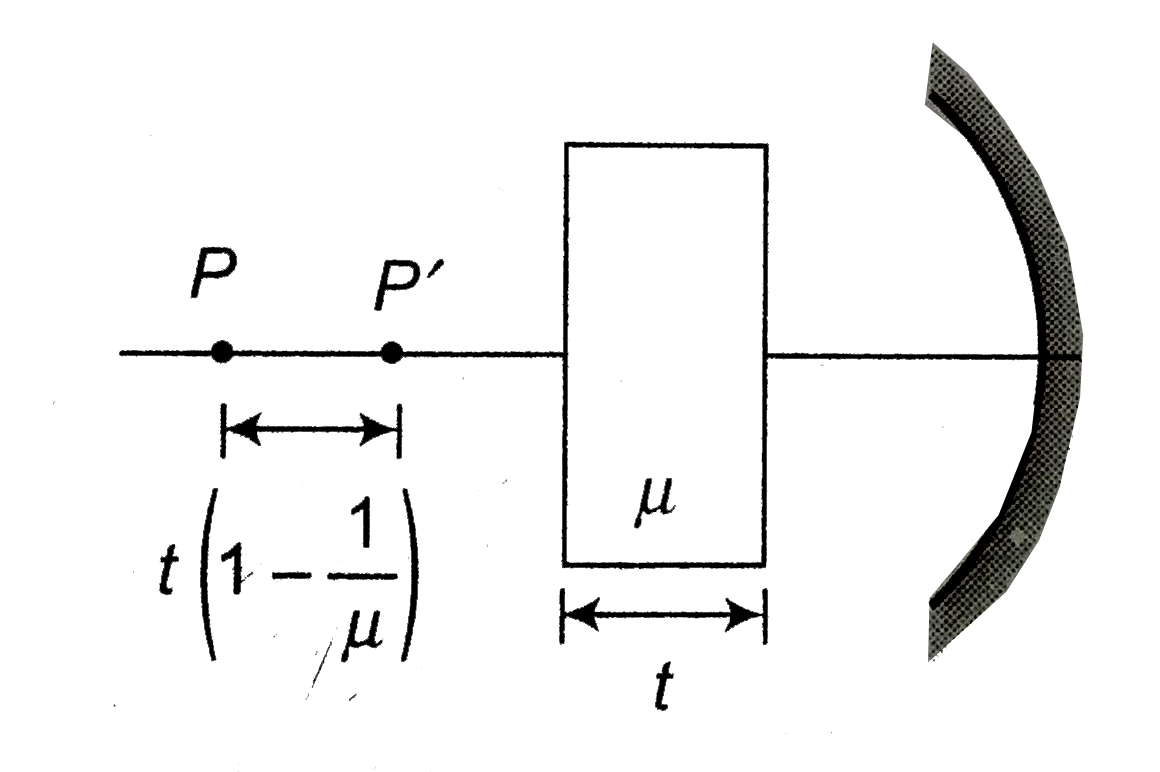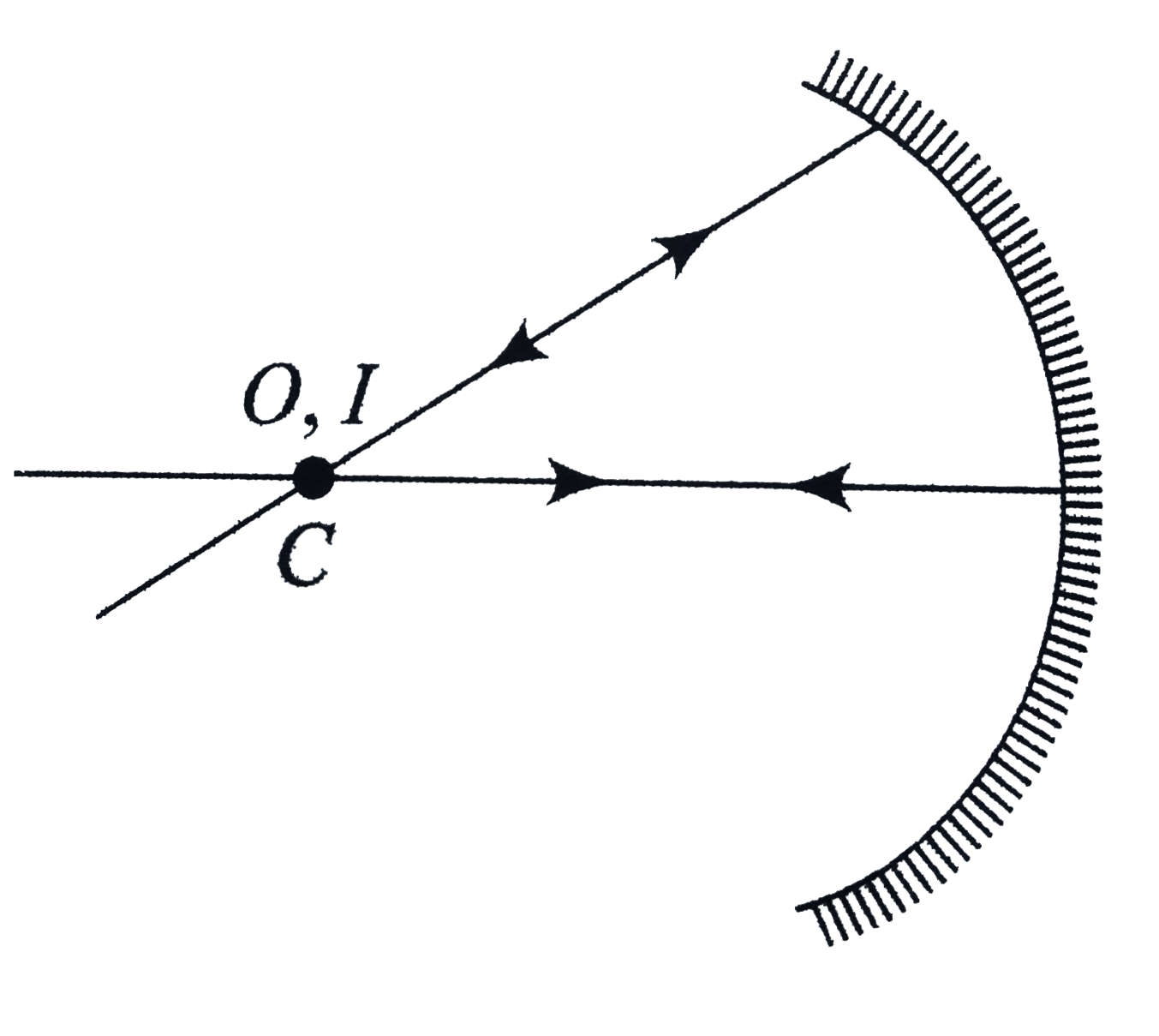P is a point on the axis of a concave mirror. The image of P, formed by the mirror, coincides with P. A rectangular glass slab of thickness t and refractive index μ is now introduced between P and the mirror. For the image of P to coincide with P again, the mirror must be moved
towards P by (μ−1)t
away from P by (μ−1)t
away from P by t(1−1μ)
towards P by t(1−1μ)
The correct Answer is:C

Due to slab, object P will appear a distance t(1−1/μ) nearer to mirror. If image of object coincides with it, mirror should be shifted by t(1−1/μ) away from P.
Topper's Solved these Questions
- BOOK - CP SINGHCHAPTER - REFRACTION OF LIGHT BY PLANE SURFACESEXERCISE - Exercises110videos
REFRACTION OF LIGHT BY PLANE SURFACES
- BOOK - CP SINGHCHAPTER - REFRACTION AT SPHERICAL SURFACESEXERCISE - EXERCISES105videos
REFRACTION AT SPHERICAL SURFACES
- BOOK - CP SINGHCHAPTER - SEMICONDUCTORSEXERCISE - Exercises140videos
SEMICONDUCTORS
Similar Questions
The image of an object kept at a distance of 30 cm in front of a concave mirror is found to coincide with itself. If a glass slab (μ=1.5) of thickness 3 cm is introduced between the mirror and the object, then
a. Identify, in which direction the mirror should be displaced so that the final image may again coincide with the object itself.
b. Find the magnitude of displacement.
 View Solution
View SolutionAn object P is focussed by a microscope M. A glass slab of thickness 2'1 cm is introduced between P and M. If the refractive index of the slab is P5, by what distance should the microscope be shifted to focus the object again ?
View Solution
Knowledge Check
- Question 1 - Select One
A point object is placed in front of a concave mirror. And its image is found to coincide with its own position. Now a glass slab of thickness 15 cm and refractive index 1.5 is placed in between object and the mirror. In order to form image again at the location of object, it is required to move the object
Atowards the mirror by 5 cmBaway from the mirror by 5 cmCtowards the mirror by 7.5 cmDaway from mirror by 7.5 cm - Question 2 - Select One
A converging lens forms a real image I on its optic axis. A rectangular galss slab of refractive index μ and thickness t is introduced between the lens and I. I will move
Aaway from the lens by (μ−1)Btowards the lens by t(μ−1)Caway from the lens by t(μ−1μ)Dtowards the lens by t(μ−1μ) - Question 3 - Select One
An object is placed 21 cm in front of a concave mirror of radius of curvature 10cm. A glass slab of thickness 3cm and refractive index 1.5 is then placed close to the error in the space between the object and the mirror. The distance of the near surface of the slab from the mirror is 1cm. The final image from the mirror will be formed at
A4.67cmB6.67cmC5.67cmD7.67cm
A concave mirror always forms a real image. (T/F)
View SolutionA glass slab of thickness 3cm and refractive index 1.5 is placed in front of a concave mirror of focal length 20cm. Where should a point object be placed if it is to image on to itself?
View SolutionAn object is held in front of a concave mirror between f and C. The image formed is.
View SolutionWhen an object is placed between the focus and the pole of a concave mirror, the image formed is
View SolutionWhen an object is held between pole and focus of a concave mirror, the image formed is.
View Solution

